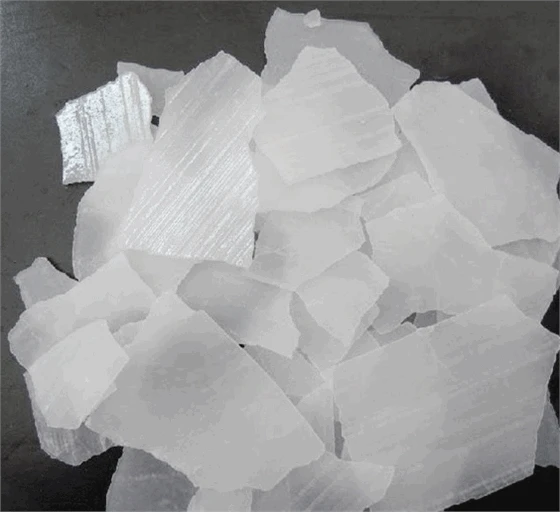



sodium chlorite and sodium hypochlorite
Sodium Chlorite and Sodium Hypochlorite Understanding Their Properties and Uses
Sodium chlorite (NaClO₂) and sodium hypochlorite (NaClO) are two important chemical compounds often discussed in the fields of water treatment, disinfection, and industrial applications. While they share similar components in their chemical structure, they possess distinct properties, uses, and safety considerations.
Chemical Composition and Properties
Sodium chlorite is a salt of chlorous acid and typically appears as a white crystalline powder. It is a potent oxidizing agent and is soluble in water. Sodium chlorite decomposes at high temperatures, releasing chlorine dioxide (ClO₂), which is the active compound responsible for its disinfectant properties. Notably, chlorine dioxide is effective in killing bacteria, viruses, and even protozoa, making sodium chlorite an essential component in water treatment processes.
On the other hand, sodium hypochlorite is best known as the active ingredient in household bleach. It is generally found in a liquid form and is highly effective as a disinfectant and antiseptic. Sodium hypochlorite is also a strong oxidizer, and its efficacy in killing pathogens is well documented. It is often used in swimming pools to maintain hygiene, in laundry to whiten fabrics, and in various cleaning products.
Uses in Water Treatment
Both sodium chlorite and sodium hypochlorite play crucial roles in water treatment, but their mechanisms and effectiveness can differ. Sodium hypochlorite is commonly used for disinfection in municipal water supplies and wastewater treatment facilities. Its ability to produce free chlorine makes it an effective bactericide and virucide, ensuring that pathogenic microorganisms are eradicated before water reaches consumers.
Sodium chlorite is used primarily in the production of chlorine dioxide, which has gained popularity in water treatment due to its ability to neutralize resistant pathogens and its lower formation of harmful by-products compared to chlorination processes using sodium hypochlorite
. Chlorine dioxide does not react as readily with organic matter in water, which reduces the risk of forming dangerous chlorinated by-products, such as trihalomethanes (THMs).sodium chlorite and sodium hypochlorite

Common Applications
In addition to their significant roles in water treatment, sodium chlorite and sodium hypochlorite are utilized in a variety of other applications. Sodium hypochlorite's disinfectant properties make it a popular choice in food preparation areas, medical facilities, and public spaces where sanitation is critical. As a bleach, it is frequently employed in the textile and paper industries for color removal and whitening processes.
Sodium chlorite, on the other hand, is often employed in the paper and pulp industry as a bleaching agent, providing a more environmentally friendly alternative to traditional chlorine bleaching methods. Furthermore, it has potential applications in the food industry, where it can be utilized for surface sanitation and in the treatment of circulating water used in food processing.
Safety and Handling
While both compounds are effective disinfectants, they also require careful handling due to their oxidative nature. Sodium hypochlorite can be irritating to the skin and eyes, and its fumes can be harmful if inhaled. As a corrosive substance, it should be stored in a cool, well-ventilated area away from incompatible materials such as acids and ammonia.
Sodium chlorite, while generally considered safer than sodium hypochlorite in certain contexts, can also pose risks. The decomposition of sodium chlorite can yield chlorine dioxide, a toxic gas that can irritate the respiratory system and mucous membranes. Therefore, it is important to handle sodium chlorite in controlled environments where adequate safety measures are in place.
Conclusion
In conclusion, sodium chlorite and sodium hypochlorite are two versatile and effective compounds used primarily for disinfection and sanitation. While both substances share similarities in their applications, they differ in terms of their chemical properties, mechanisms of action, and safety considerations. Understanding these differences is crucial for professionals in water treatment and other industries to ensure the safe and effective use of these important chemicals. Proper handling and adherence to safety protocols can maximize their benefits while minimizing potential risks, making them valuable tools in promoting public health and hygiene.
-
Why Sodium Persulfate Is Everywhere NowNewsJul.07,2025
-
Why Polyacrylamide Is in High DemandNewsJul.07,2025
-
Understanding Paint Chemicals and Their ApplicationsNewsJul.07,2025
-
Smart Use Of Mining ChemicalsNewsJul.07,2025
-
Practical Uses of Potassium MonopersulfateNewsJul.07,2025
-
Agrochemicals In Real FarmingNewsJul.07,2025
-
Sodium Chlorite Hot UsesNewsJul.01,2025










